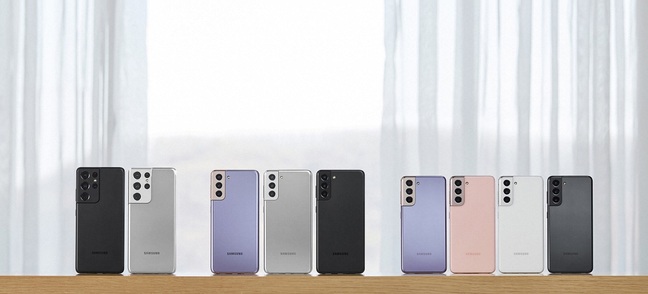This article is more than 1 year old
Samsung tones down sticky stuff in the Galaxy S21 series, simplifying repairs massively
Glue you! Well not anymore. Early signs are positive ahead of launch, but it's not without issues
Preliminary teardowns suggest the Samsung Galaxy S21 is easier to fix than its predecessors, sidestepping some of the more dubious design decisions that previously frustrated third-party repair shops.
The most welcome change is that Samsung appears to have toned down its use of glue, historically a hallmark of the firm's pricey flagships. This is demonstrated by a recent teardown published by right-to-repair vlogger PBKreviews, which demonstrates the Galaxy S21's backplate effortlessly detaching following a modest application of heat.
By contrast, opening phones from the previous Galaxy S20 series was an insanely involved process, relying on specialist tools and demanding monk-like levels of patience. Anyone hoping to glimpse its innards would have to apply heat to each side of the device, and then poke open a small aperture using a suction cup and a guitar plectrum. This process would have to be repeated four times*, and came with the risk of damaging the phone's delicate glass rear.
This time around, Samsung has opted to use a polymer backplate across the Galaxy S21 line-up. This has proven slightly controversial, given these are among the most expensive Android phones you can buy, and plastic doesn't exactly scream "premium". Still, there are advantages to this route. Polymers are almost always more durable than glass, which is helpful considering Samsung has promised at least three years' worth of software updates. They're also less fragile, making servicing and maintenance easier.
Samsung has also stuck with a modular approach, with most components situated on individual circuit boards, which are held in place with tiny Phillips screws. Using the same driver head across each screw simplifies reassembly of the phone. It's also nice to see the firm opted to put the USB-C port on its own daughterboard, rather than directly on the phone's logic board, as was the case with 2019's Galaxy S10 series.
USB-C ports (and, indeed, charge ports in general) are a common fault point in phones. The good news is they're fairly easy (and cheap) to replace, provided they're situated on their own circuitry. If the charge port sits on the main logic board, repairs quickly become more complicated. You're faced with two equally undesirable choices: replacing the entire logic board, or finding someone sufficiently handy with a soldering iron.
Speaking of common repair jobs, let's mention display and battery replacements. While these should proved simpler to deal with this time around, thanks to the ease in detaching the phone's backplate, it wouldn't be unfair to say Samsung could have gone further.
As with previous generations of Galaxy phones, replacing the S21's display requires the handset to be disassembled in its entirety. That means what would otherwise be a 30-minute job on an iPhone 12 could realistically take four times as long with the S21.
Screen replacement has been a long-standing point of complaint in Galaxy phones, and we hope Samsung addresses it in future generations. Admittedly, simplifying this would necessitate a more substantial hardware redesign, but it's still doable.
Similarly, the Galaxy S21 series has not made battery replacements easy. Accessing the phone's internal power supply requires the removal of various components, including the wireless charging coil and antenna wires. It's also affixed in place with some adhesive. Since it's not a good idea to apply heat directly to a lithium-ion battery, you're instead forced to physically pry it from the phone using brute force and a credit card.
Battery replacements could be made easier with the use of a weaker adhesive, which can be removed with pull-tabs. Apple has done just that on the iPhone.
Those complaints notwithstanding, the Galaxy S21 looks promising from a repairability perspective, although several questions remain unanswered.
Will third-party shops be able to access replacement components, or does Samsung plan to restrict its supply chain to in-house and approved repair shops. Are there any software-level barriers to reusing components from donor phones, as we saw with the iPhone 12 camera debacle last year? These are important points, and will likely only really be answered after the public release of the Galaxy S21 series.
Vulture Central got its talons on a Galaxy S21 earlier today. We'll be publishing our first impressions in the coming days so keep an eye out for that. ®
* This is to stop the adhesive on the S20 from sticking back in place. So heat one side until the glue melts, and whack in a pick to stop it closing over. Repeat that process for each side, until the backplate wasn't physically connected to the rear of the phone. Then you could pry it off. ®

